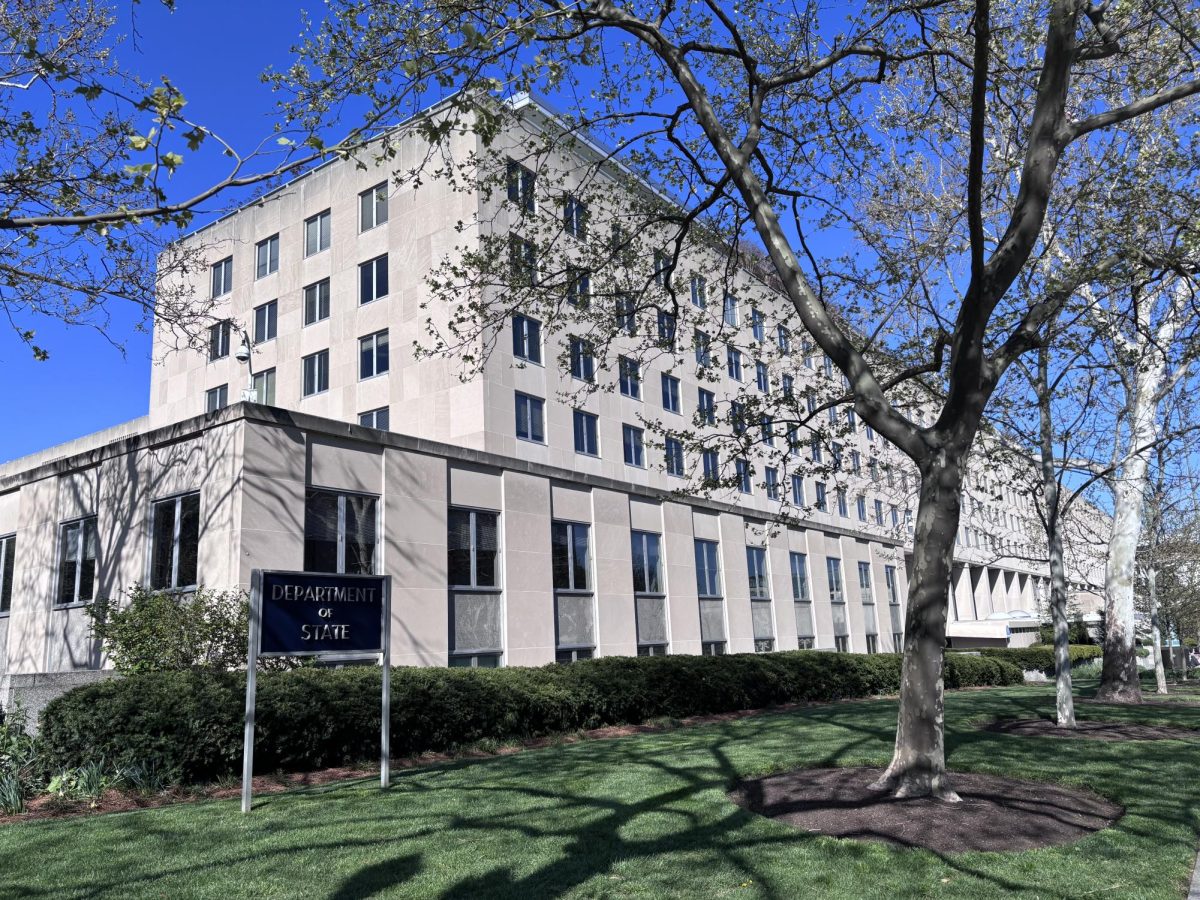The Frederick C. Robie House, a National Historic Landmark on the corner of 58th and Woodlawn designed by famous architect Frank Lloyd Wright, reopened in late March after an $11 million restoration.
The Robie House was completed in 1910, and the Frank Lloyd Wright Trust finished an exterior restoration in 2009. This reopening marks the conclusion of a 14-month-long restoration of the interior that included woodwork, light fixtures, windows, flooring, and the textured plastering and coloration of the walls and ceilings.
“Now we’re adding the jewelry,” said Karen Sweeney, a preservation architect with the Frank Lloyd Wright Trust, the nonprofit that operates the Robie House, among other Wright properties. The “jewelry” includes the return of several pieces of original Wright furniture, on loan from the Smart Museum of Art. This has helped to create a unified aesthetic, transforming the house into a total work of art.
The interior restoration brings to life Wright’s original vision and what was buried under years of changes. In decades past, the Robie House has been used as a dorm, classroom building, and office space. The comprehensive restoration has turned the clock back to 1910.
Many rooms on the main and ground floor have been fully restored and are open to the public, including the entry hall, living room, children’s playroom, and billiard room. During the restoration, significant attention was paid to historical accuracy and fine-tuning the details. From the magnesite flooring to the light fixtures, all elements of the house required the work of several experts.
The house’s 175 leaded-glass windows and doors are a notable example. They are an integral part of Wright’s Prairie School–style architecture, showing the abstraction of organic shapes in nature. When part of a window needs to be replaced, specialists must match the color, create the glass, and work on the leaded borders (which are actually copper-covered zinc).
“It can be between $7,000 to $10,000 a window,” Sweeney said.
The Robie House was designed as a “building for the prairie,” to blend in with the physical landscape of the Midwest. Every element reinforces the idea of horizontality, from the dramatic cantilevered roof to the Roman-style bricks inside. “[Wright] plays with the structure to make it meet design standards,” Sweeney said. “The Robie House was ahead of its time.” This is part of what makes the house significant.
As the Robie House continues to be an important architectural work open to the public, further restoration will eventually have to be done to preserve Wright’s vision for future visitors. As of now, the building is open for tours between 10 a.m. and 3 p.m. Thursday through Monday.









